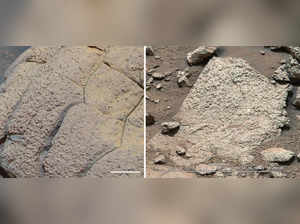VICE
A scientist has observed a “gravitational anomaly” in certain star systems that could potentially upend a fundamental assumption about the universe, according to a new study.
The anomaly arises when loosely orbiting stars, known as wide binaries, seem to move in ways that defy established models of gravity, which are based on the ideas of Isaac Newton and Albert Einstein. The mind-bending discovery hints at a possible alternate theory of physics that does not depend on the existence of weird unidentified phenomena, such as dark matter, to explain the phenomena we see in space.
Gravity is one of the most familiar forces we experience in our daily lives, but it is also among the toughest to explain. In the standard model of cosmology—a well-tested theoretical framework—gravity is governed by Newtonian laws and Einstein’s theory of general relativity. The standard model also predicts there is an unknown material, called dark matter, that accounts for the vast majority of the universe’s mass.
The standard model is a robust theory, but some objects in outer space nevertheless seem to deviate from its gravitational playbook. For this reason, scientists began to develop another explanation of gravity in the 1980s, known as Modified Newtonian dynamics (MOND), that does not require the existence of dark matter.
Kyu-Hyun Chae, an astronomer at Sejong University, has now put these models to the test by analyzing the accelerations of stars in 26,500 wide binaries located within about 650 light years of Earth using imagery captured by the European Space Agency’s Gaia observatory. Scientists have previously searched for signs of modified gravity in these systems, but Chae took the next step by developing a new code that could account for special details, like the occurrence rate of so-called “nested” binaries in which the loosely orbiting stars also have close stellar companions.
The new data suggests that when the gravitational accelerations of these stars slip below one nanometer per second squared, they begin to move in ways that are more aligned with MOND models than by the standard model. Chae said the findings offer “direct evidence for the breakdown of standard gravity at weak acceleration” and reveal “an immovable anomaly of gravity in favor of MOND-based modified gravity,” according to a recent study published in The Astrophysical Journal.
“When the results started to show up from my new and more reliable code, my initial reaction was that it was unbelievable,” Chae said in an email to Motherboard. “I was feeling like I was dreaming. It seemed so unreal. This is because my results did not match any previous results.”
“Several previous results even claimed that the standard gravity was preferred by wide binaries data including Gaia DR3,” he continued. “One group has been claiming an anomaly for some time, but the anomaly seemed not to match well the predictions of existing modified gravity theories. However, those previous studies did not self-calibrate or fully take into account the amount of hidden nested binaries.”
Scientists who work with MOND theories often focus on observations of galaxies, but researchers have increasingly looked to wide binaries for anomalies because stellar scales are too small to be affected by dark matter (assuming it exists).
“Testing gravity with wide binaries is interesting because dark matter can play no role in their internal dynamics,” Chae said in the study. “Thus, unlike galaxies and galaxy clusters, there is no need to distinguish predictions of modified gravity and dark matter that appear to overlap and differ only subtly in some cases.”
In the new study, Chae reports what he calls “clear evidence” that the movements of binaries at points of weak acceleration seem to sync up with a particular MOND prediction known as AQUAL, according to the study. This discovery suggests that the standard view of gravity cannot account for these motions at low accelerations, which may inspire scientists to rethink aspects of Newton’s inverse square law of gravity and Einstein’s general relativity, as well as the necessity of dark matter.
“Because a large amount of dark matter—six times the baryonic or ordinary matter based on the standard model—was required by assuming that general relativity was valid in the low acceleration limit, such a need for a large amount of dark matter is no longer valid,” Chae explained. “This does not necessarily preclude the possibility that new particles, such as sterile neutrinos, could not be found. But, it is clear that there is no need for as much dark matter as required by general relativity.”
While the results are tantalizing, Chae said that future observations and theoretical work would be needed to build on the discovery. He also noted that these findings pose a challenge to some parts of the standard model, but that the model is still the best lens with which to view many other phenomena in the universe.
“I would like to emphasize that all successful aspects of Newtonian dynamics and general Relativity in the non-MOND regime will continue to be cherished,” Chae told Motherboard. “For example, the description of black holes by general relativity is valid and has nothing to do with the anomaly in the low acceleration limit. We are talking about a revision in the low acceleration limit only.”
Even so, any update or revision of the standard model based on these findings would have a profound effect on our conception of the universe.
“Because the standard cosmology is based on general relativity, cosmology needs a major revision now,” Chae concluded. “I think we are now entering an extremely exciting period of time. When the ultraviolet catastrophe of Maxwell’s theory of electrodynamics was discovered more than a century ago, it eventually led to quantum physics. We are now having a low-acceleration catastrophe of gravity. It is exciting to see what it will lead the world into.”



Connect with us on our socials: